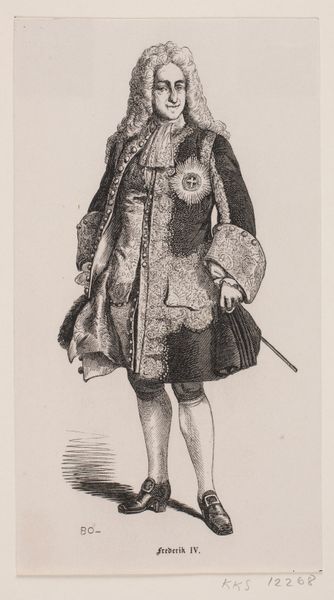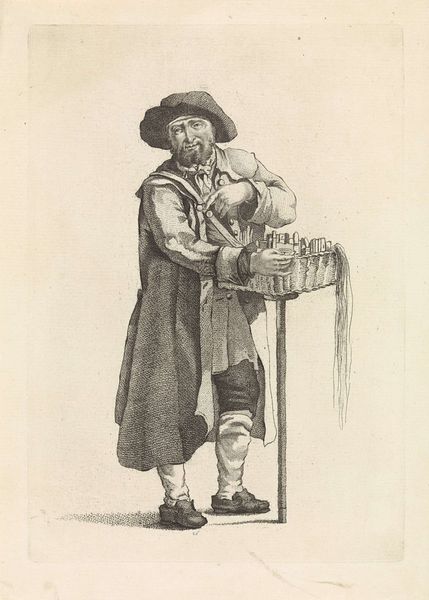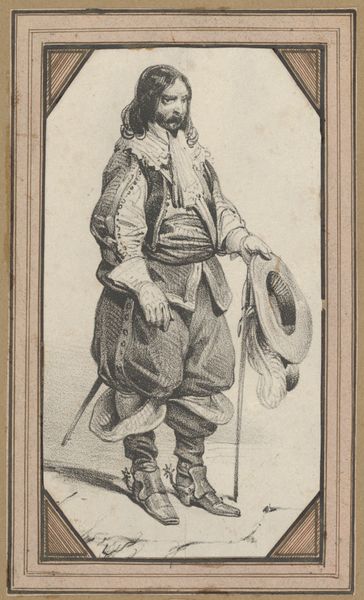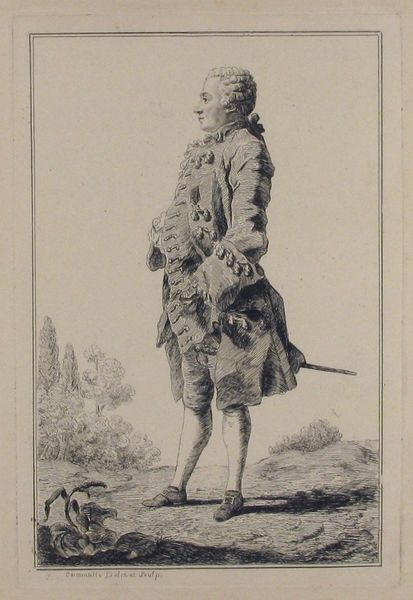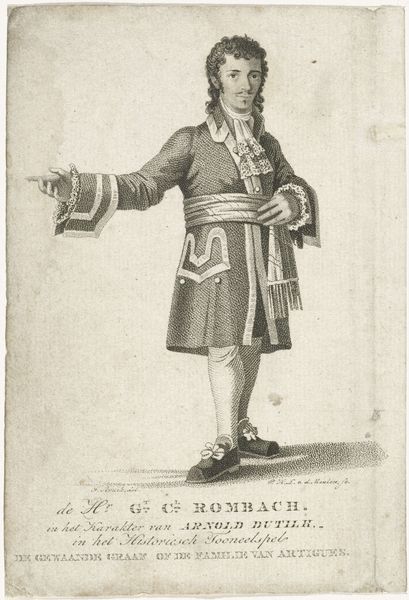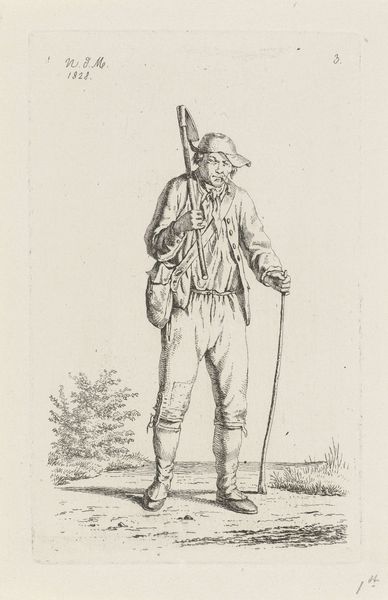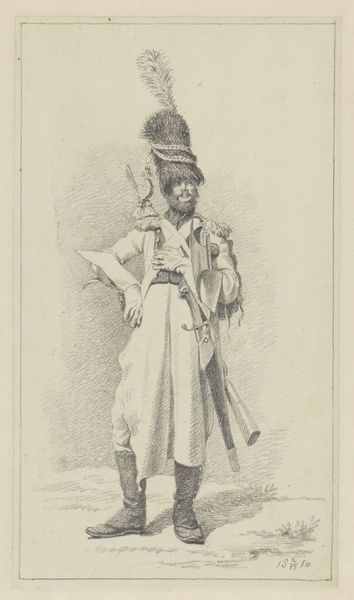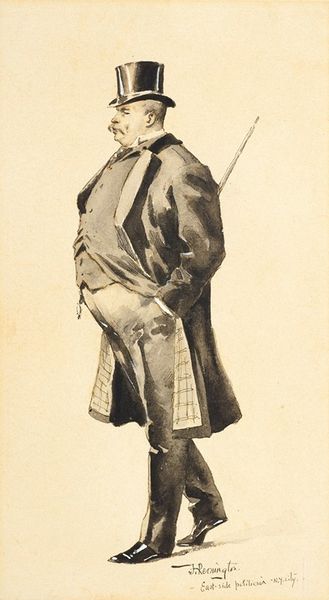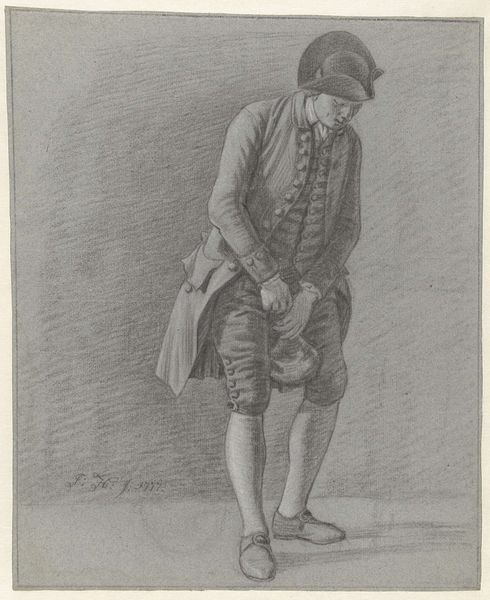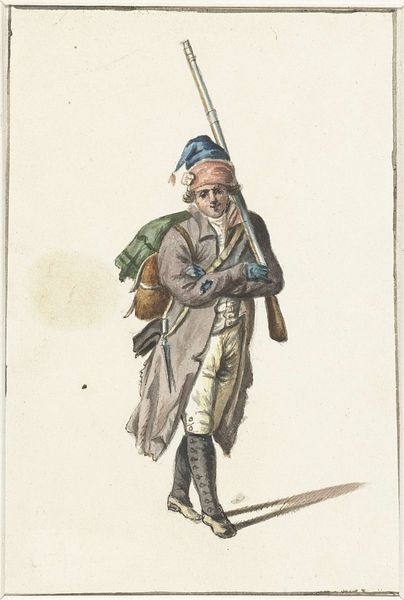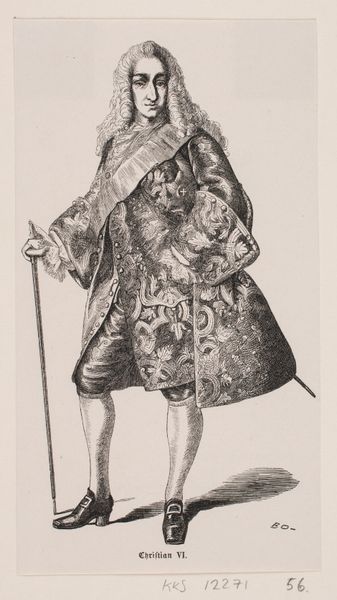
print, engraving
#
portrait
# print
#
figuration
#
line
#
genre-painting
#
northern-renaissance
#
engraving
#
realism
Dimensions: height 204 mm, width 147 mm
Copyright: Rijks Museum: Open Domain
Curator: What a curious piece! Before us, we have "Boer met korenschoof onder de arm," which translates to "Farmer with a Sheaf of Wheat under his Arm." It's believed to be from somewhere between 1772 and 1833, currently residing at the Rijksmuseum. Attributed to Mathias de Sallieth, it's an engraving. Editor: My first impression? Weary, but dignified. The farmer has such weight, both literal, from the sheaf, and somehow, also metaphorical. There's a lived-in quality to his posture and the simple rendering of his clothes that feels incredibly human. Curator: Absolutely. The very lines used to create the image—the stark realism mixing with what I see as almost a Northern Renaissance formality—highlights the dignity in labor. It speaks to the cultural weight assigned to the working class and rural life, don't you think? Editor: Oh, definitely. Look at the way the lines of the engraving are so economic—almost utilitarian—they reflect the subject perfectly. It is about daily work, it is a sort of process to represent this process. Also, the choice of print is really amazing in this case because it is easily reproducible. Do you believe in some way it wants to show us what should be more valuable and widespread in society? Curator: Possibly. And it plays with the boundary of fine art, using methods we might now view more as craft, but elevating the subject matter. He looks almost proud, his hand nonchalantly placed in his coat—very composed for someone just in from the fields. I mean, is it a realistic representation or slightly romanticized? A debate for the ages. It might want to send some signal. Editor: I see your point about the romanticized view, yes. Still, it feels honest. There’s nothing overly idealized in his facial features, his clothes are practical. To me, the print's power lies in its seeming simplicity of method mirroring a way of life, one intertwined with making a living with our hands. Curator: It's true; Sallieth truly makes one appreciate the simple dignity of the everyday. I see the human aspect more. I feel this print is one person saying what I feel in my work, too. Maybe it represents that too: labor and meaning. Editor: Yes, precisely. Thinking about it from this lens allows me to reconsider the link between art, reproduction and the work ethic of farmers and the culture surrounding this work from so long ago. Thanks!
Comments
No comments
Be the first to comment and join the conversation on the ultimate creative platform.
